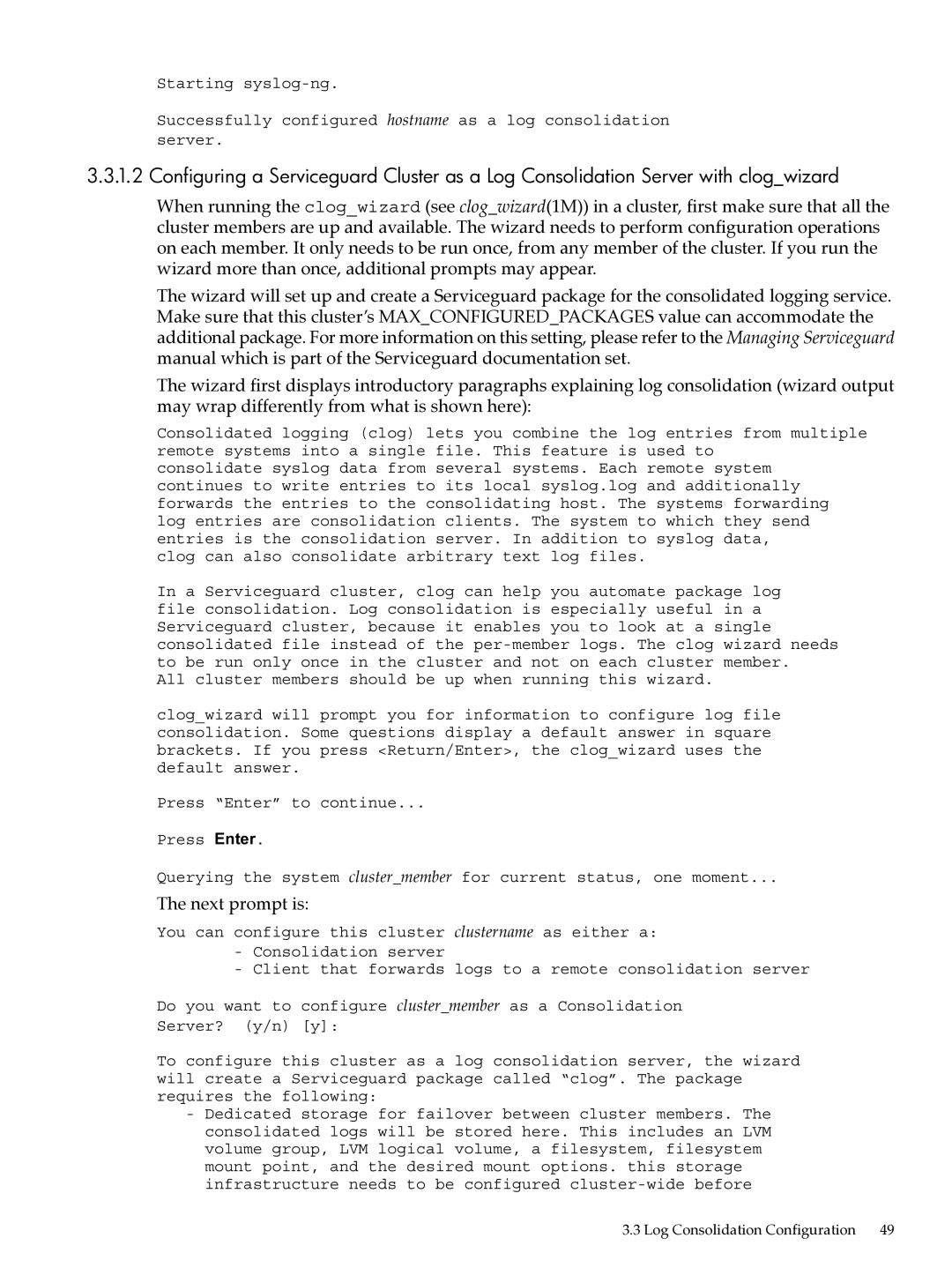Starting
Successfully configured hostname as a log consolidation server.
3.3.1.2 Configuring a Serviceguard Cluster as a Log Consolidation Server with clog_wizard
When running the clog_wizard (see clog_wizard(1M)) in a cluster, first make sure that all the cluster members are up and available. The wizard needs to perform configuration operations on each member. It only needs to be run once, from any member of the cluster. If you run the wizard more than once, additional prompts may appear.
The wizard will set up and create a Serviceguard package for the consolidated logging service. Make sure that this cluster’s MAX_CONFIGURED_PACKAGES value can accommodate the additional package. For more information on this setting, please refer to the Managing Serviceguard manual which is part of the Serviceguard documentation set.
The wizard first displays introductory paragraphs explaining log consolidation (wizard output may wrap differently from what is shown here):
Consolidated logging (clog) lets you combine the log entries from multiple remote systems into a single file. This feature is used to
consolidate syslog data from several systems. Each remote system continues to write entries to its local syslog.log and additionally forwards the entries to the consolidating host. The systems forwarding log entries are consolidation clients. The system to which they send entries is the consolidation server. In addition to syslog data, clog can also consolidate arbitrary text log files.
In a Serviceguard cluster, clog can help you automate package log file consolidation. Log consolidation is especially useful in a Serviceguard cluster, because it enables you to look at a single consolidated file instead of the
All cluster members should be up when running this wizard.
clog_wizard will prompt you for information to configure log file consolidation. Some questions display a default answer in square brackets. If you press <Return/Enter>, the clog_wizard uses the default answer.
Press “Enter” to continue...
Press Enter.
Querying the system cluster_member for current status, one moment...
The next prompt is:
You can configure this cluster clustername as either a:
-Consolidation server
-Client that forwards logs to a remote consolidation server
Do you want to configure cluster_member as a Consolidation
Server? (y/n) [y]:
To configure this cluster as a log consolidation server, the wizard will create a Serviceguard package called “clog”. The package requires the following:
-Dedicated storage for failover between cluster members. The consolidated logs will be stored here. This includes an LVM volume group, LVM logical volume, a filesystem, filesystem mount point, and the desired mount options. this storage infrastructure needs to be configured
3.3 Log Consolidation Configuration | 49 |
